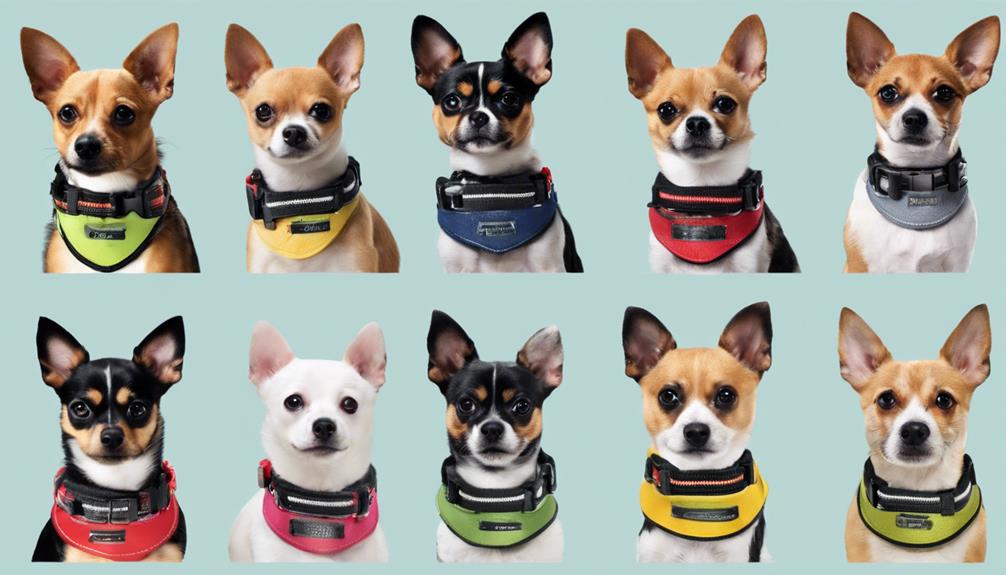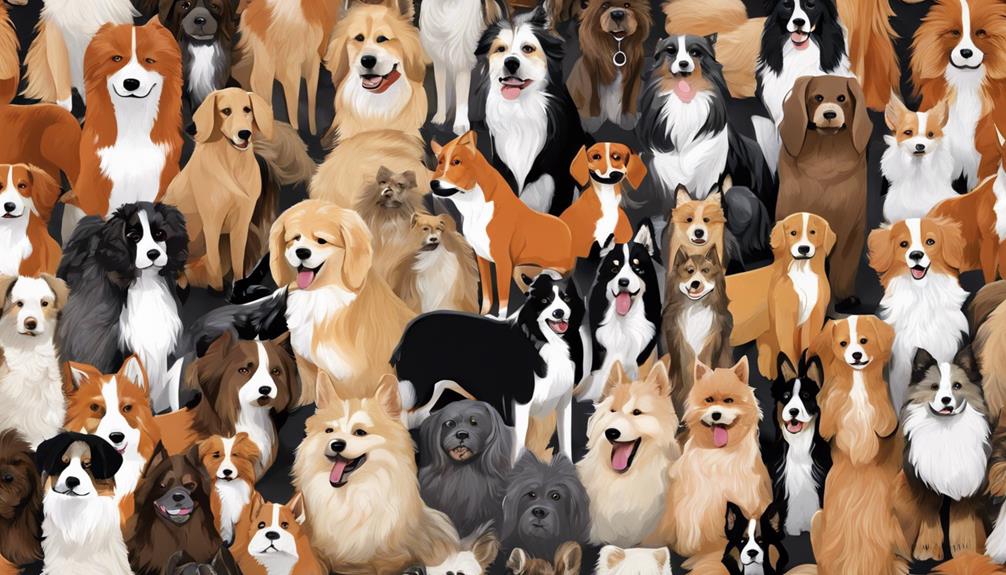To excel in service dog training positions, a profound comprehension of animal behavior is crucial, including understanding how dogs think and behave, hands-on experience in dog training, and customized practice to meet client requirements. Familiarity with the laws regarding service dogs, such as the Americans with Disabilities Act, and obtaining necessary certifications is indispensable. Moreover, it is important to distinguish between different types of service dogs, such as guide dogs, hearing dogs, and psychiatric service dogs, in order to cater to specific needs effectively. Choosing appropriate candidates based on temperament, trainability, and health is key. Concentrate on maintaining high-performance standards, highlighting response speed, minimizing errors, and preparing for real-life scenarios. It is essential to remember that the primary role of service dogs is to enhance independence and enhance quality of life.
Obedience training expertise, like consistency and clear communication, is key to success, along with interpersonal skills and effective client relationships. Mastering service dog training involves a blend of skills, laws, and empathy that empowers both the dog and the recipient.
Key Takeaways
- Understand animal behavior and tailor training to meet client needs.
- Comprehend service dog laws and certification requirements.
- Select dogs based on temperament, health, and trainability.
- Focus on high performance standards and program effectiveness.
- Develop expertise in obedience training and build strong client relationships.
Essential Skills for Service Dog Training
To excel in service dog training, possessing a profound understanding of animal behavior is essential. As a service dog trainer, your ability to comprehend how dogs think and act is critical in effectively teaching them the specific tasks they need to perform. This expertise is fundamental in obtaining service dog certification and providing the necessary skills to assist individuals with disabilities.
Experience in training dogs is a crucial component of your role as a service dog trainer. Through hands-on practice and learning opportunities, you'll develop the proficiency needed to tailor training tasks to meet the unique requirements of each client. Your expertise won't only enhance your performance as a trainer but also ensure that the service dogs you work with can successfully assist those in need.
Understanding Service Dog Laws

Understanding service dog laws is essential for both owners and trainers to navigate legal requirements effectively. As you explore the world of Service Dog Training, here are some important points to take into account:
- The Americans with Disabilities Act (ADA) specifically defines service animals as dogs trained to perform tasks for individuals with disabilities. This legislation guarantees that service dogs have legal rights to accompany their owners in public places.
- Documentation from healthcare professionals can play a significant role in supporting the need for a service dog. Having the necessary paperwork in order is key to guaranteeing a smooth process.
- While certification for service dogs isn't mandatory, obtaining it through reputable organizations can add credibility and assurance to your dog's training.
- Understanding the specific laws and regulations surrounding service dogs is paramount for both owners and trainers. Being well-versed in these legal aspects will help you fulfill your role effectively in the Service Dog Training field.
Differentiating Service Dog Types
Distinguishing the types of service dogs plays a pivotal role in understanding their specialized training and specific roles in assisting individuals with various disabilities. Service dogs provide invaluable support to those in need through their trained abilities.
Guide dogs, for instance, assist the visually impaired by guiding them through obstacles and streets. Hearing dogs are trained to alert individuals who are deaf to important sounds in their surroundings, enhancing their safety and awareness. Mobility assistance dogs are essential for individuals with physical disabilities, aiding them in movement and daily tasks.
Diabetic alert dogs have the unique ability to detect changes in blood sugar levels, providing vital support for managing diabetes. Additionally, psychiatric service dogs offer assistance and emotional support to individuals with mental health conditions, contributing to their well-being.
Understanding these different types of service dogs is fundamental for a professional trainer to tailor the training program to meet the specific needs of individuals with physical disabilities or mental health challenges.
Selecting Suitable Candidates

When selecting suitable candidates for service dog training, prioritize evaluating temperament, trainability, and health.
Here are four key factors to keep in mind when choosing potential service dog candidates:
- Socialization and Non-Aggressiveness: Look for dogs that are well-socialized and demonstrate a friendly, non-aggressive nature towards people and other animals. This characteristic is vital for service dogs who'll be interacting with various individuals regularly.
- Responsiveness to Training: Select candidates that show enthusiasm to learn and respond effectively to training commands. A dog that's quick to grasp new skills and commands will progress more efficiently in service dog training.
- Calmness and Confidence: Look for dogs that display a composed demeanor and assurance in various environments. These qualities are crucial for service dogs to remain collected and focused during their tasks.
- Adaptability, Physical Health, and Age: Take into account dogs that are adaptable to different situations, in good physical health, and at an appropriate age for training. A dog that's physically fit, adaptable, and of suitable age will have a higher chance of succeeding in service dog training.
Achieving High Performance Standards
To achieve high performance standards in service dog training, it's vital to focus on performance evaluation metrics and the effectiveness of training programs. By monitoring progress and consistently guaranteeing the dog's abilities, you can tailor training to meet specific needs and evaluating success.
Understanding the impact of training methods on the dog's behavior is essential for achieving the desired outcomes in service dog training.
Performance Evaluation Metrics
Evaluating a service dog's ability to reliably and consistently perform specific tasks focuses on metrics that measure accuracy, speed, and precision. To achieve high performance standards in service dog training, consider the following key evaluation criteria:
- Response Time: The speed at which the service dog reacts to commands is vital for assisting individuals promptly.
- Task Completion Rate: Making sure that the service dog successfully completes tasks at a high rate reflects its efficiency and reliability.
- Error Minimization: Minimizing mistakes during task execution is essential to maintain safety and effectiveness.
- Real-World Scenarios: Assessing the service dog's performance in real-world situations ensures readiness to assist individuals with disabilities effectively.
Training Program Effectiveness
Training programs for service dog trainers emphasize achieving high performance standards in disability tasks, public access, and handler confidence to guarantee reliable assistance for individuals with disabilities. Trainers undergo rigorous training to make certain service dogs can perform specific tasks effectively. The importance of these programs is vital for service dogs to meet the diverse needs of people with disabilities.
Training focuses on consistent task performance and the ability to assist in various environments. By meeting these high standards, trainers can enhance the reliability of service dogs in providing assistance. Evaluating training effectiveness involves appraising the dog's capability to perform tasks reliably and support handlers with confidence. This ensures that service dogs can deliver the necessary aid to individuals with disabilities.
Passing Certification Programs

Successfully passing certification programs in service dog training showcases your proficiency in essential skills required to train service dogs effectively for individuals with disabilities. These programs evaluate your knowledge and abilities in obedience training, task-specific skills, and public access training.
Here are four key reasons why passing certification programs is vital for aspiring service dog trainers:
- Validation of Expertise: Certification programs validate your expertise in service dog training, proving your competency in assisting individuals with disabilities.
- Enhanced Credibility: By passing certification programs, you gain credibility in the field, establishing yourself as a reliable and skilled professional trainer.
- Recognition and Respect: Achieving certification brings recognition and respect from peers and clients, enhancing your reputation as a qualified service dog trainer.
- Expanded Job Opportunities: Successful completion of certification programs opens doors to various job opportunities as a professional service dog trainer, enabling you to make a meaningful impact in the lives of those in need.
Crucial Role of Service Dogs

Service dogs' indispensable role in aiding individuals with disabilities by providing tailored skills is fundamental to enhancing their independence and quality of life. These assistance dogs are trained to perform specific tasks that are essential for individuals with disabilities to carry out their daily activities. The bond between a service dog and its handler goes beyond companionship; it is built on trust, reliability, and mutual support. By providing emotional support and practical assistance, service dogs play a critical role in improving the overall well-being of their handlers.
| Role of Service Dogs | Description |
|---|---|
| Trained to Perform Tasks | Service dogs are professionally trained to perform tasks tailored to the specific needs of individuals with disabilities. |
| Enhancing Independence | These dogs help their handlers gain independence by assisting with daily tasks that would otherwise be challenging. |
| Improving Quality of Life | Service dogs provide emotional support and practical assistance, contributing to an improved quality of life for individuals with disabilities. |
| Essential for Well-being | The tasks performed by service dogs are essential for the well-being and safety of their handlers, making their presence invaluable. |
| Building Trust and Support | The bond between a service dog and its handler is based on trust, reliability, and mutual support, creating a strong partnership. |
Obedience Training Expertise

To effectively nurture obedience training expertise in service dogs, trainers must possess a profound understanding of positive reinforcement techniques. Positive reinforcement involves rewarding desired behaviors to encourage their repetition.
Here are four key elements to help you master obedience training for service dogs:
- Consistency: Consistent training methods and expectations help service dogs understand what's required of them, leading to quicker learning and better retention of commands.
- Patience: Patience is essential as each dog learns at its own pace. Remaining calm and patient during training sessions creates a positive environment for learning.
- Clear Communication: Clear and concise communication guarantees that service dogs understand commands effectively, reducing confusion and promoting obedience.
- Tailoring Training: Adapting training methods to suit the individual needs of dogs with disabilities is vital for successful obedience training. It helps create a customized approach that maximizes learning potential.
Service Dog Trainer Success Factors

Exemplifying strong interpersonal skills and expertise in animal behavior are key factors for achieving success as a service dog trainer. As service dog trainers, your ability to communicate effectively with both dogs and clients is paramount. Your expertise in understanding animal behavior will allow you to tailor training methods to meet the unique needs of each dog and handler.
Building essential relationships with clients is vital for successful training outcomes and establishing long-term partnerships. Remember, the ultimate goal of service dog training is to equip dogs with the skills necessary to assist individuals with disabilities in their daily lives.
Frequently Asked Questions
How Do I Make a Career Out of Dog Training?
To make a career out of dog training, gain experience volunteering or working with dogs. Develop skills through training and apprenticeships. Collaborate with individuals with disabilities. Get certified by organizations like CCPDT. Explore opportunities in training organizations, shelters, clinics, and government agencies.
How Do I Start a Successful Dog Training Business?
To start a successful dog training business, you must first establish a solid foundation in animal behavior and positive reinforcement techniques. Gain formal certification for credibility. Seek job opportunities in diverse settings. Enjoy a rewarding career making a difference.
How Do You Structure a Dog Training Session?
Start with a clear goal for each session. Break tasks into steps. Use positive reinforcement. Keep sessions short. End positively. Your focus and engagement matter. Celebrate progress. Build for more. Mastering structure leads to successful training sessions.
What Is the First Thing to Teach a Service Dog?
Start by teaching your service dog basic obedience commands like sit, stay, and come. This foundation creates a strong partnership, enabling advanced task-specific training. Build trust through communication. Setting this groundwork paves the way for success in service dog training.
How Important is Collar Training in Service Dog Training Jobs?
Collar training is crucial in service dog training jobs. The use of proper dog training collar mastery techniques ensures that service dogs understand commands and behaviors. It also helps maintain control and aids in teaching necessary skills for assisting individuals with disabilities.
Conclusion
Congratulations on completing this step-by-step guide to mastering service dog training jobs!
Did you know that there are over 500,000 service dogs in the United States alone?
By following these essential skills, understanding laws, and selecting suitable candidates, you're well on your way to becoming a successful service dog trainer.
Remember, patience and dedication are key to achieving high performance standards and passing certification programs.
Keep up the great work!










